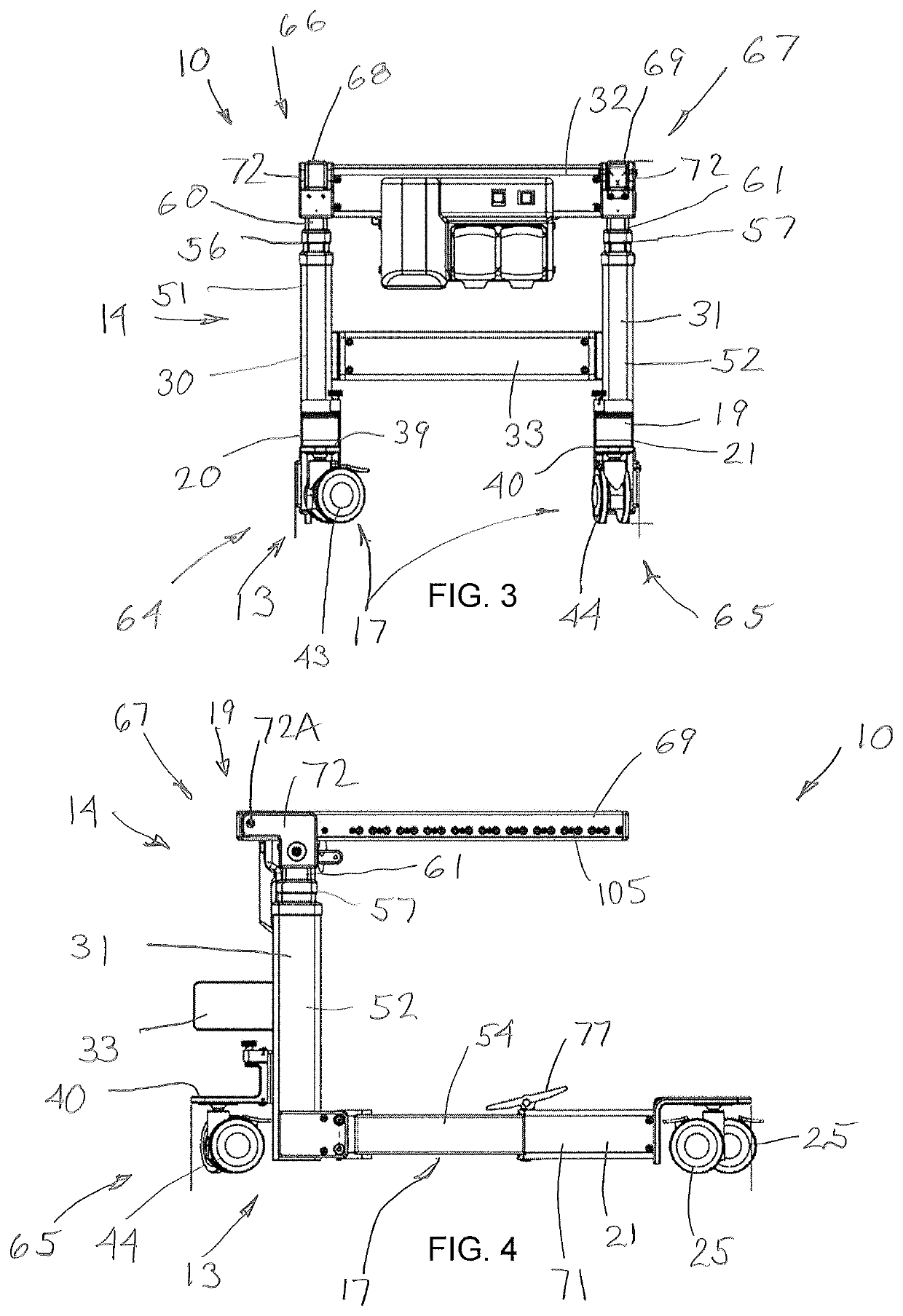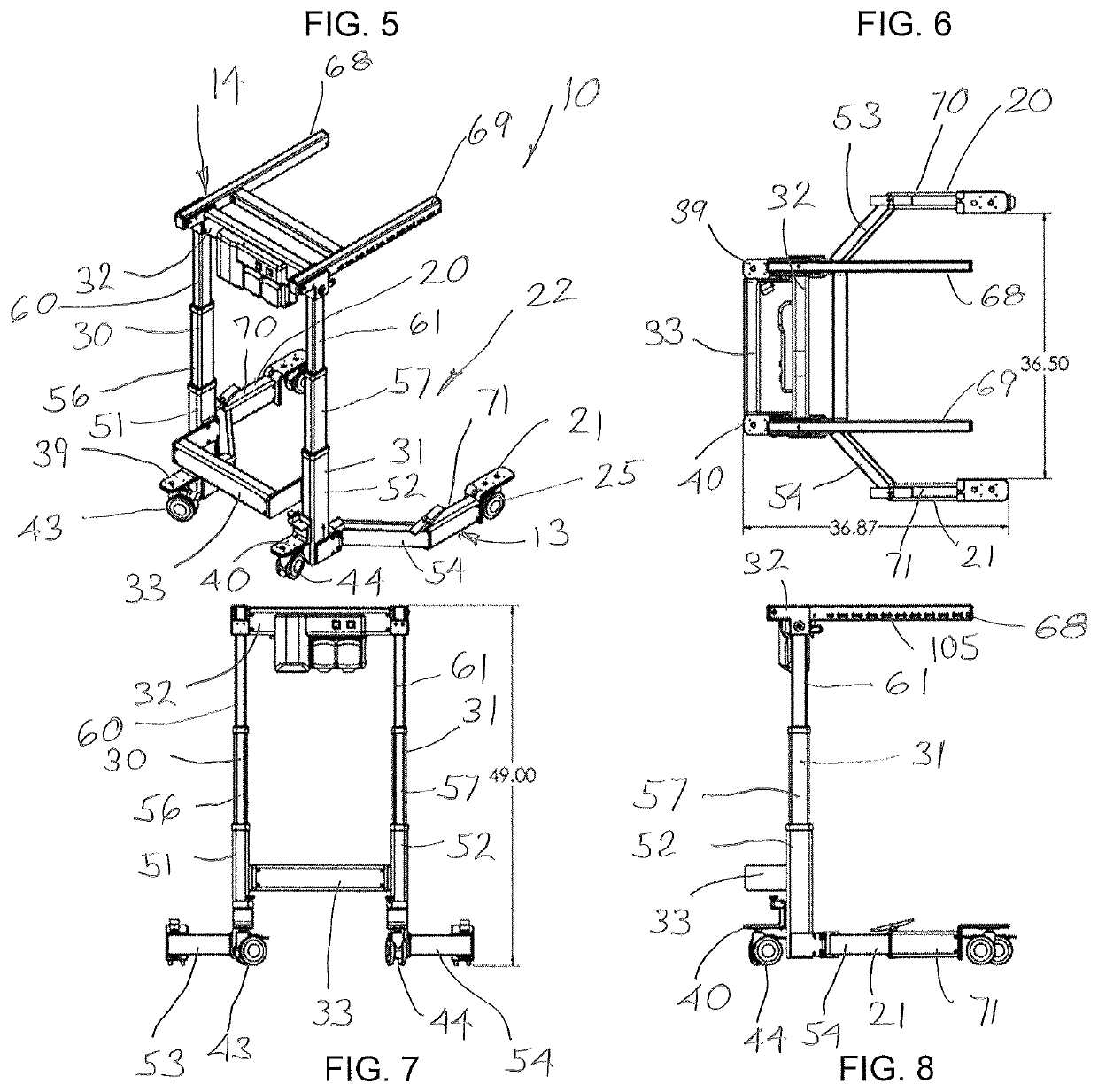Wheelchair lift-transfer device
a technology for wheelchairs and lifts, applied in medical science, nursing beds, ambulance services, etc., can solve the problems of affecting the lifting range, and affecting the mobility of wheelchairs
- Summary
- Abstract
- Description
- Claims
- Application Information
AI Technical Summary
Benefits of technology
Problems solved by technology
Method used
Image
Examples
Embodiment Construction
[0155]Referring to FIG. 1, there is illustrated one embodiment of the wheelchair lift-transfer device 10 (herein-after referred to as the “transporter” for convenience) configured as a rear entry power lift wheelchair. As seen in FIG. 2, the transporter 10 is readily foldable for storage or transport as will described herein.
[0156]Referring to FIGS. 1 and 3-4, the transporter 10 includes a wheeled base assembly 13 having an upright assembly 14 projecting therefrom. The upright assembly 14 in turn mounts thereon a removable seat assembly 15 preferably comprising a seat support 16A and back support 16B (FIGS. 23 and 24), the latter being used for receiving an occupant / patient 18 for transporting by the transporter 10 and transfer to and from the transporter 10. The wheeled base assembly 13 includes a generally rigid and rearwardly-opening U-shaped horizontally extending wheeled base 17 that is defined by the upright assembly 14 at the front 19 and a pair of generally parallel and rear...
PUM
 Login to View More
Login to View More Abstract
Description
Claims
Application Information
 Login to View More
Login to View More - R&D
- Intellectual Property
- Life Sciences
- Materials
- Tech Scout
- Unparalleled Data Quality
- Higher Quality Content
- 60% Fewer Hallucinations
Browse by: Latest US Patents, China's latest patents, Technical Efficacy Thesaurus, Application Domain, Technology Topic, Popular Technical Reports.
© 2025 PatSnap. All rights reserved.Legal|Privacy policy|Modern Slavery Act Transparency Statement|Sitemap|About US| Contact US: help@patsnap.com



